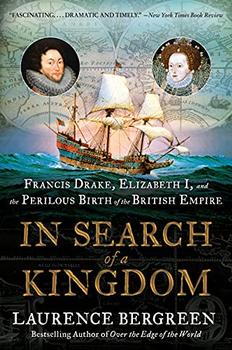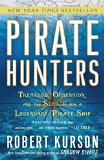Summary | Excerpt | Reviews | Beyond the book | Read-Alikes | Genres & Themes | Author Bio

Three Crucibles in the Latin American Story
by Marie AranaAgainst the background of a thousand years of vivid history, acclaimed writer Marie Arana tells the timely and timeless stories of three contemporary Latin Americans whose lives represent three driving forces that have shaped the character of the region: exploitation (silver), violence (sword), and religion (stone).
Leonor Gonzales lives in a tiny community perched 18,000 feet above sea level in the Andean cordillera of Peru, the highest human habitation on earth. Like her late husband, she works the gold mines much as the Indians were forced to do at the time of the Spanish Conquest. Illiteracy, malnutrition, and disease reign as they did five hundred years ago. And now, just as then, a miner's survival depends on a vast global market whose fluctuations are controlled in faraway places.
Carlos Buergos is a Cuban who fought in the civil war in Angola and now lives in a quiet community outside New Orleans. He was among hundreds of criminals Cuba expelled to the US in 1980. His story echoes the violence that has coursed through the Americas since before Columbus to the crushing savagery of the Spanish Conquest, and from 19th- and 20th-century wars and revolutions to the military crackdowns that convulse Latin America to this day.
Xavier Albó is a Jesuit priest from Barcelona who emigrated to Bolivia, where he works among the indigenous people. He considers himself an Indian in head and heart and, for this, is well known in his adopted country. Although his aim is to learn rather than proselytize, he is an inheritor of a checkered past, where priests marched alongside conquistadors, converting the natives to Christianity, often forcibly, in the effort to win the New World. Ever since, the Catholic Church has played a central role in the political life of Latin America—sometimes for good, sometimes not.
In Silver, Sword, and Stone Marie Arana seamlessly weaves these stories with the history of the past millennium to explain three enduring themes that have defined Latin America since pre-Columbian times: the foreign greed for its mineral riches, an ingrained propensity to violence, and the abiding power of religion. What emerges is a vibrant portrait of a people whose lives are increasingly intertwined with our own.
The multi-layered structure and depth of detail make the book as engrossing as it is informative, and while Arana avoids prescriptions for the future or current policy, her message is clear—exploitation, violence and religion define Latin America, and for change to come, these legacies will require a reckoning that the world has been unprepared thus far to make...continued
Full Review
(973 words)
This review is available to non-members for a limited time. For full access,
become a member today.
(Reviewed by Rose Rankin).
 For Americans accustomed to the myth of Europeans settling largely empty lands, where Natives barely featured, it can be difficult to envision the New World as densely populated with Indigenous societies. But in Central and South America, before the arrival of European germs and conquistadors, that was precisely the situation—the Americas contained an estimated 40-140 million people at the turn of the 16th century when Columbus arrived.
For Americans accustomed to the myth of Europeans settling largely empty lands, where Natives barely featured, it can be difficult to envision the New World as densely populated with Indigenous societies. But in Central and South America, before the arrival of European germs and conquistadors, that was precisely the situation—the Americas contained an estimated 40-140 million people at the turn of the 16th century when Columbus arrived.
It's impossible to know the exact number, since the scale of deaths from 1492 onward was so vast and the colonizers didn't record the grisly toll. Devastating diseases that Indigenous peoples had no immunity to, such as smallpox, ravaged the entire continent. Those they didn't kill, the Spanish ...
This "beyond the book" feature is available to non-members for a limited time. Join today for full access.

If you liked Silver, Sword, and Stone, try these:

by Laurence Bergreen
Published 2022
In this grand and thrilling narrative, the acclaimed biographer of Magellan, Columbus, and Marco Polo brings alive the singular life and adventures of Sir Francis Drake, the pirate/explorer/admiral whose mastery of the seas during the reign of Queen Elizabeth I changed the course of history.

by Robert Kurson
Published 2016
Fast-paced and filled with suspense, fascinating characters, history, and adventure, Pirate Hunters is an unputdownable story that goes deep to discover truths and souls long believed lost.
Every good journalist has a novel in him - which is an excellent place for it.
Click Here to find out who said this, as well as discovering other famous literary quotes!